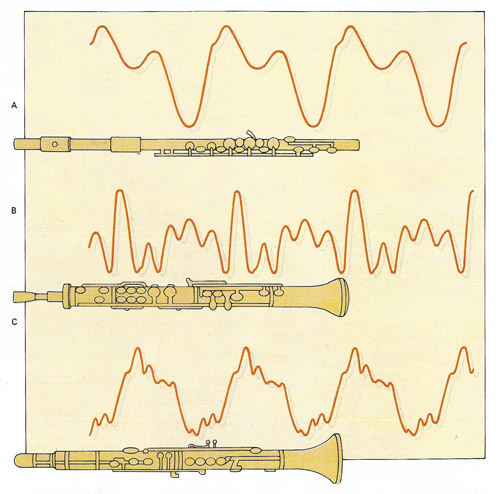Sound engineering. Most people think sound is somehow sine waves and that's it. And well, that's technically correct on some level, but you can layer sound waves on top of each other to create triangle waves or square waves or what specific instruments happen to sound like:
 Source
Source
And well, these aspects have implications. Like with an oboe, even the basic waveform is quite interesting, so it's excellent for solos.
On the other hand, with a more boring sound, like a sine wave, you can do relatively wild things in terms of melody or combining them into intervals, and listeners won't feel overwhelmed as quickly.
And then you've got the fun field of drums. You can often just take white noise (or pink noise etc.) and just make its volume drop off rapidly and that already sounds similar to a drum.
Which is again interesting on the boring/interesting spectrum. That noise signal adds a short moment of chaos into the mix. But then we often make drums play quite structured rhythms to entertain a different boring/interesting spectrum over time.
